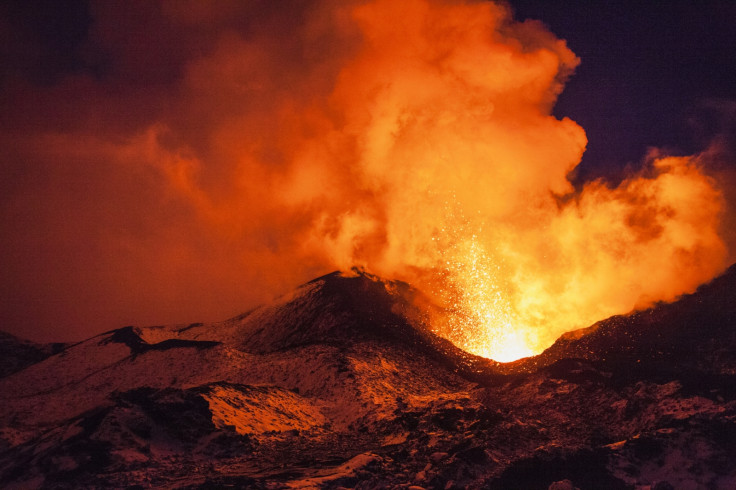Volcano eruptions triggered mass extinction before the age of dinosaurs 200 million years ago
The end-Triassic extinction event coincided with pulses of volcanism, as shown by mercury levels in sediments.
High concentration of mercury identified in ancient sediments suggest that large-scale episodes of volcanism coincided with the end-Triassic mass extinction around 201 million years ago.
It is likely that these huge pulses of volcanic activity led to great environmental perturbations, leading to the extinction of many species living on Earth at the time and setting the scene for the dawn of the dinosaurs.
Previous studies had already shown that volcanic activity was happening around the time of the extinction and there was some evidence for an increase in the concentration of carbon dioxide (CO2) in the atmosphere. Scientists thought that volcanic gases such as CO2 might have been an important contributor to the extinction event.
However, the global extent of the volcanic fluctuations at the end of the Triassic remained unknown and more research was needed to confirm the role of volcanic CO2.
Mercury levels
In a study now published in the journal PNAS, scientists have examined sediments and volcanic rocks which had formed around the end of the Triassic, looking for fluctuations in mercury - an important element released in volcanic gas.
"You want to look for something like mercury that is not too abundant in the earth's surface reservoirs and that comes out of volcanoes in significant quantities. That way the signals from volcanism are easier to spot. Mercury also has a sufficiently long atmospheric lifetime that it stays in the atmosphere long enough to get far enough away from the volcano itself, to actually be seen in sediments around the world," study author Tamsin Mather of Oxford University, told IBTimes UK.
At five of the six locations studied, the researchers identified pulses of elevated mercury in the sediment layers, in strata formed at the end-Triassic extinction and between it and the Triassic–Jurassic boundary, separated by approximately 200,000 years. These elevated mercury concentrations imply repeated episodes of large-scale volcanism over that time.

"Using mercury as a fingerprint for volcanism, one of the things that we have seen is evidence of a mercury increase, in the same layers for which we had previous evidence of a CO2 increase. This really supports the fact that this was volcanic CO2, linked to the extinction event," study author Lawrence Percival said.
Although volcanism has been previously suggested to cause CO2 increases around the end-Triassic extinction, there have also been other explanations suggested such as the thawing of submarine frozen methane to release carbon to the atmosphere.
Because mercury is a fingerprint of volcanism however, the matching of increased atmospheric CO2 and mercury greatly supports a volcanic origin for the CO2 during the end-Triassic extinction. Moreover, the pulses of volcanism inferred from mercury may therefore mean that the release of CO2 to the atmosphere also occurred in pulses, which may have had profound implications for the climate.

Some species survived
Volcanism affects the environment in quite a number of ways and it is still not yet fully understood how it triggers mass extinction events. However, scientists do know that a big eruption can cool the planet down and that it also releases a big amount of CO2. Repeated releases of this gas can be harmful to the environment on the long term.
"Single eruptions really don't put out enough CO<sub>2 to cause significant changes to the atmosphere, but if you have large scale volcanism going on for a very prolonged period of time, you may end up warming the planet up and triggering lot of other changes such as alterations to ocean chemistry, which can cause problems for life," Mather said.
Oceans may for instance become more acidic or less oxygenated, and habitats may slowly change and become less suitable for the species living within them. Over thousands of years, these changes may lead to the extinction of many species.
"Warming and cooling due to volcanic activity can have a range of potential knock-on effects on Earth. We see various species disappear around the time of the end-Triassic extinction, particularly early crocodile-like animals and marine species such as relatives of ammonites. There was quite a big turn-over in the plant community as well," Percival said. "That being said, quite a few more modern animals, amphibians and mammals, and some early dinosaurs, appear before the mass extinction and they make it through".
© Copyright IBTimes 2025. All rights reserved.






















